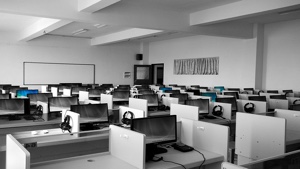
Music Education using Assistive Technology
Annotated bibliography - Research Resources
While there is a long history of creating tools and technologies to facilitate accessible musical instruments and software there is little current research on the subject. This is particularly true for music education. While researching this topic I was able to find few peer reviewed scholarly papers but was able to find many bits of anecdotal evidence pointing to the the success of using assertive technologies in music education. Based on the glut of anecdotal evidence I was able to conclude that the scholarly articles while few in number were enough to back up the anecdotal evidence.
Cano and Sanchez-Iborra sought to determine if a specific technology tool (that they developed) would be effective in helping children with cognitive impairments effectively participate in a music education program. They named the tool Platform for the Integration of Handicapped Children in Music Education (PLAIME).
The study had three objectives
- Determine whether students would benefit from the technology while learning a musical instrument
- Measure the students' increase in ICT skills
- Observe behavior while learning with PLAIME
They split the 15 students, aged 8 to 19, into 2 groups based on intellectual ability. Then they conducted 10 one hour sessions over a 10 week period. The students worked with the teachers and the software to learn how to play a recorder. At the end of the 10 weeks the data was complied and it showed that all but three students had improvement in musical ability. Also, six of the students had marked improvement. All of the students improved their ICT skills and were able to use the software without supervision by the end of the 10 sessions. Finally, the students showed enjoyment while using the software. These three observations showed that the software was effective.
Cano, M., & Sanchez-Iborra, R. (2015). On the use of a multimedia platform for music education with handicapped children: A case study. Computers & Education, 87, 254-276.
Borges and Tome present a methodology to address an accessibility concern in Brazilian schools. Brazilian schools require all students to take music classes but they do not provide the tools to support students with vision impairments. To address this the authors suggest using prior software and modifying its use to meet the needs of classrooms. The software is Musibraille and it provides a way for people with vision impairments to transcribe music in braille. The paper details what braille music is, ways to teach braille music with technology, what Musibraille is, and the methodology tying it all together. The authors conclude that Musibraille can be effective in teaching learners of multiple ability levels in the same class setting. But that there needs to be formal research to back up the conclusion.
Borges, J. A., & Tomé, D. (2014). Teaching Music to Blind Children: New Strategies for Teaching through Interactive Use of Musibraille Software. Procedia Computer Science, 27, 19-27.
Rush focuses on providing a descriptive report on available technologies. He posits that access to accessible music curriculum is not as big of an obstacle as teachers gaining access to accessible technology. To address this he provides a list of technologies that can help music educators make curriculum accessible to students with visual impairments. Additionally, he provides advice and examples to support the technologies. Rush also addresses the concern from music students concerning music literacy versus learning by ear and comes down on the side of literacy.
Rush, T. W. (2015). Incorporating Assistive Technology for Students with Visual Impairments into the Music Classroom. Music Educators Journal, 102(2), 78-83.
Siligo writes from the perspective of an experienced music educator who has worked with student with vision impairments and also happens to have a vision impairment himself. The article is focused on practical concerns that arise when attempting music education with people with vision impairments. He goes through a series of concerns and addresses them one by one with advice and instruction. Of particular note was the concern with braille literacy. Even if students start class with basic literacy few of them will have braille music literacy and there will have to be immediate accommodations to address that.
Siligo, W. R. (2005). Enriching the Ensemble Experience for Students with Visual Impairments. Music Educators Journal, 91(5), 31.
The researchers developed a tool and did research to see if the tools was effective.
The study had two objectives
- Develop a Computer-Assisted Music Learning System (CAMLS)
- Evaluate whether the students could properly use the system and increase musical proficiency
The research subjects consisted of 14 boys and 12 girls all with hearing impairments. They were split into two groups of 13. One group received traditional instruction and the other group used the CAMLS system. Quantitatively the results were conclusive that the students utilizing CAMLS showed significant improvement compared to the traditional group. Qualitatively there was a significant difference in enthusiasm. They were more likely show more interest, have a higher musical self-worth and more motivation to study. As a small study there are apparent limitations and the authors suggest utilizing more educators and students and also conducting a longitudinal study.
Yang, H., Lay, Y., Liou, Y., Tsao, W., & Lin, C. (2007). Development and Evaluation of Computer-Aided Music-Learning System for the Hearing Impaired. Journal Of Computer Assisted Learning, 23(6), 466-476.